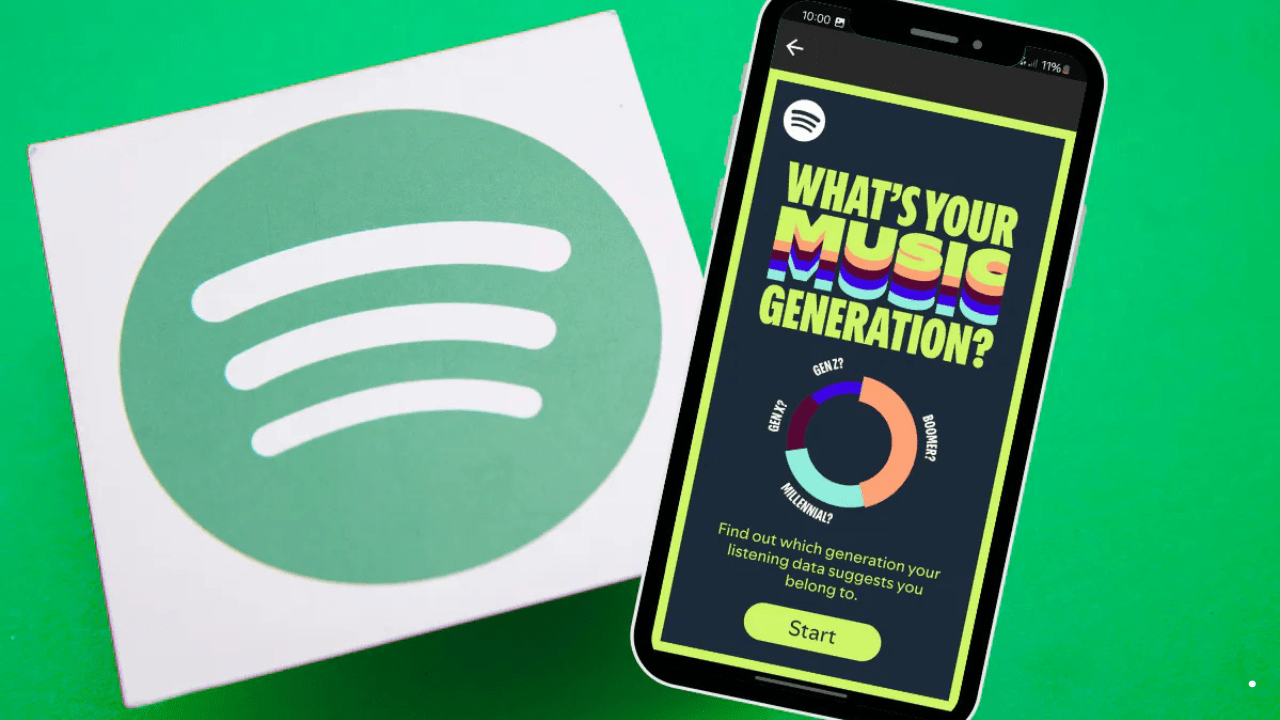Spotify is more than just a music streaming platform. It’s a hub for discovery, inspiration, and creativity. With its vast database, intelligent algorithms, and innovative tools, Spotify music generation is changing how artists create, distribute, and connect with their audiences.
This blog explores how Spotify influences music generation, from playlist curation and AI tools to its impact on modern music trends.
What Is Spotify Music Generation?
Spotify music generation refers to the processes and tools that enable the creation and discovery of music on the platform. It involves a mix of algorithms, user interaction, and artist contributions that redefine how music is composed, shared, and consumed.
Key Elements of Spotify Music Generation:
- Playlists: Curated collections that shape listening habits and trends.
- AI and Algorithms: Tools that predict listener preferences and suggest new music.
- Artist Tools: Features like Spotify for Artists that help musicians grow their reach.
- User Interaction: Listeners’ preferences contribute to shaping the platform’s music landscape.
The Role of Playlists in Spotify Music Generation
Playlists are central to Spotify music generation. They introduce new music to listeners while providing artists with exposure.
Types of Spotify Playlists:
- Editorial Playlists: Curated by Spotify’s team, like Today’s Top Hits and RapCaviar.
- Algorithmic Playlists: Personalized playlists such as Discover Weekly and Release Radar.
- User-Generated Playlists: Created by listeners, often with niche themes.
How Playlists Influence Music Creation:
- Shaping Genres: Artists often tailor their music to fit popular playlist styles.
- Driving Trends: Viral songs gain momentum through playlist placements.
- Audience Reach: Playlists expose artists to millions of potential listeners.
AI and Algorithms in Spotify Music Generation
Spotify uses advanced AI and machine learning to enhance music generation and discovery.
How AI Powers Music on Spotify:
- Recommendation Systems: Suggests songs based on user behavior and listening habits.
- Mood Analysis: Matches music to moods or activities, like Chill or Workout playlists.
- Data-Driven Insights: Analyzes trends to identify emerging genres or popular styles.
Impact on Music Creation:
- Custom Experiences: Listeners get personalized playlists, encouraging diverse music consumption.
- Artist Insights: Data helps musicians understand their audience and refine their music.
Tools for Artists in Spotify Music Generation
Spotify empowers artists with tools that simplify music production, distribution, and promotion.
Key Features for Artists:
- Spotify for Artists: Provides analytics, audience insights, and promotional tools.
- Soundtrap: A digital audio workstation (DAW) for collaborative music creation.
- Promo Cards: Custom graphics for sharing music on social media.
Benefits for Artists:
- Enhanced Visibility: Better chances of playlist inclusion.
- Audience Engagement: Direct communication with fans through tools like Marquee campaigns.
- Data Utilization: Informed decision-making based on listener behavior.
The Impact of Spotify Music Generation on Genres
Spotify’s vast library and playlists contribute to the evolution of genres.
Genre-Blurring Trends:
- Lo-fi Hip-Hop: Popularized through chill playlists, blending electronic and hip-hop elements.
- Bedroom Pop: Independent artists gain recognition via Spotify’s algorithm.
- Global Music Fusion: Playlists like Global X introduce listeners to international sounds.
Spotify music generation fosters creativity by encouraging experimentation and cross-genre collaborations.
User Contributions to Spotify Music Generation
Listeners play a vital role in shaping Spotify’s music ecosystem.
How Users Influence Music:
- Creating Playlists: User-generated playlists often go viral, spotlighting new songs.
- Sharing Tracks: Social sharing amplifies reach for emerging artists.
- Engaging with Features: Features like Spotify Wrapped offer insights into user behavior, impacting music trends.
Challenges in Spotify Music Generation
While Spotify music generation offers numerous benefits, it also presents challenges:
- Algorithm Dependency: Over-reliance on algorithms can limit artistic freedom.
- Oversaturation: The platform’s vast library makes it harder for artists to stand out.
- Royalty Concerns: Some artists feel that Spotify’s payment model undervalues their work.
Despite these challenges, Spotify remains a critical tool for modern music generation.
The Future of Spotify Music Generation
As technology evolves, Spotify is likely to introduce even more innovative features.
Future Trends:
- AI-Composed Music: Spotify could integrate AI-generated music into its playlists.
- Enhanced Interactivity: Features like live-streamed jam sessions or personalized song requests.
- Virtual Reality Integration: Immersive music experiences through VR.
Spotify music generation will continue to push boundaries, offering new ways to create and experience music.
Conclusion
Spotify music generation is reshaping how music is created, discovered, and consumed. Through playlists, AI tools, and artist-focused features, Spotify bridges the gap between creators and listeners, fostering a dynamic music ecosystem.
Whether you’re an artist, producer, or listener, Spotify offers endless opportunities to explore, innovate, and connect. Dive into the world of Spotify music generation and be part of the future of sound.
Related Articles:
For further reading, explore these related articles:
- Spotify Playlist Link: How to Create, Share, and Optimize
- Top Apps Like Spotify: Discover the Best Music Streaming Alternatives
For additional resources on music marketing and distribution, visit Deliver My Tune.






